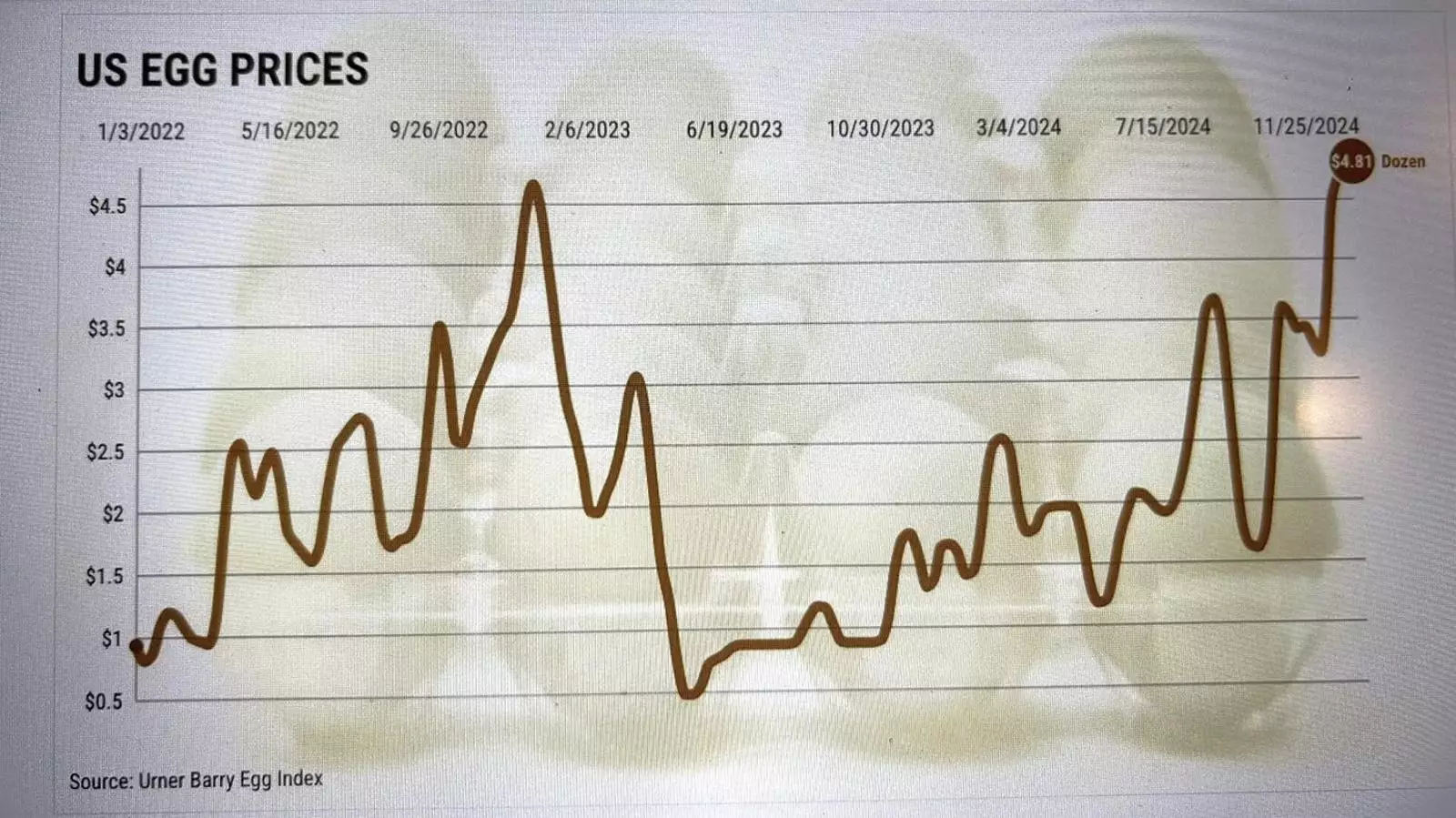The escalating price of eggs has stirred considerable discontent among consumers, and understandably so. As of now, Grade A large eggs average $4.15 per dozen, which represents a dramatic increase from the previous year’s price of $2.52—a staggering 36.8% jump. This surge calls for a deeper inquiry into the underlying factors driving the prices, necessitating an exploration into the broader agricultural economics that are often eclipsed by the immediate focus on egg prices alone.
To unravel the complexities of egg pricing, one must acknowledge the pivotal role of chicken in the cycle of egg production. Common discourse may echo the philosophical debate surrounding “what comes first: the chicken or the egg?” Yet, overlooking the affective factors that influence the supply of chickens ignores the foundational aspect of egg production. If we consider that it typically takes a hen around four and a half months to begin laying eggs after hatching, we can appreciate the degree to which timing in production aligns with market demand. This intricate relationship between bird health, market demands, and production cycles invites a nuanced analysis of the agricultural ecosystem.
The Interplay Between Supply and Demand
Instabilities in the market often arise when consumer demand for eggs outstrips their supply. This excess demand can create a feedback loop, where rising prices attempt to regulate consumption, which in turn slows down purchases, providing time for production to catch up. However, when unforeseen circumstances impact the balance between supply and demand—be it through environmental disruptions or market shifts—the dynamics can become even more convoluted. The price dynamics of eggs are not merely a result of economics; they are inextricably tied to a web of agricultural, environmental, and even political variables that influence production rates.
The recent surge in egg prices can be attributed to several complex factors, each contributing in its way to the rising cost. Firstly, shifting consumer preferences over recent years have favored poultry over traditional sources of protein such as red meat. Coupled with rising health consciousness, this trend has significantly increased the demand for eggs. Furthermore, climate change has brought about challenges that affect water quality and feed availability for chickens, leading to stress in the production lifecycle. However, perhaps the most impactful factor has been the outbreaks of diseases in poultry, notably the devastating H5N1 avian flu.
In 2022, the onset of this disease led to the alarming loss of approximately 147.25 million birds across the nation, dramatically impacting egg production capabilities. With only about 379 million egg-laying hens in the United States remaining by 2024, the numbers revealed a meager 1% increase compared to the previous year. This stark decline in production capacity, with each hen typically laying around 300 eggs annually, further illustrates the tightrope balance that egg producers must navigate.
The Future of Egg Prices
Compounding this situation are external environmental factors, with recent reports indicating that the United States experienced over 73 significant climate-related disasters between 2022 and 2024. These events have posed additional challenges for poultry growers, complicating and delaying the cultivation of healthy egg-laying hens. The forecast indicates that egg prices may skyrocket by more than 20% this year, substantially exceeding the overall food inflation projection of merely 2.2%.
As these complexities unfold, forecasts appear bleak, particularly with an early surge in consumer demand anticipated around Easter. The ongoing spread of avian flu, which has already led to the culling of over 19.63 million birds in 29 states, adds another layer of unpredictability to the equation. The CDC and USDA’s involvement underscores the serious public health ramifications of poultry management, further complicating prospects for price stabilization.
The challenges of food production are multifaceted and can take considerable time to rectify when disrupted by external factors. Prices for basic commodities like eggs are unlikely to diminish in the near future, as the ripple effects from disease outbreaks, climate change, and evolving consumer behaviors continue to manifest. Consequently, consumers might want to stay informed about market conditions and remain strategic about their purchasing decisions. As food inflation persists, it seems that egg prices will stay in the spotlight for the foreseeable future—an ongoing discussion echoing much deeper issues surrounding food production and agricultural sustainability.


Leave a Reply